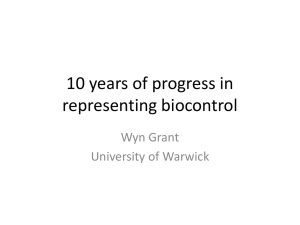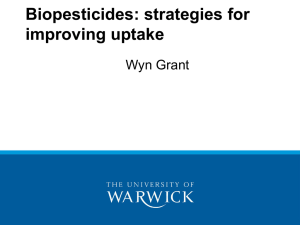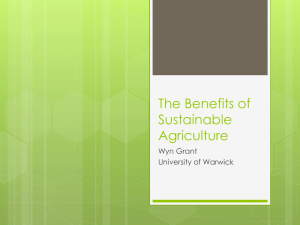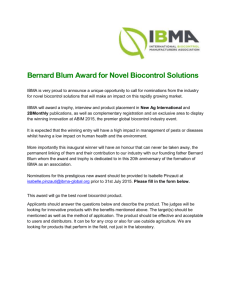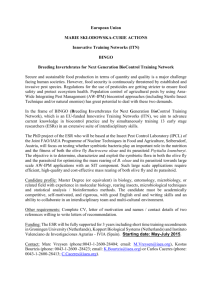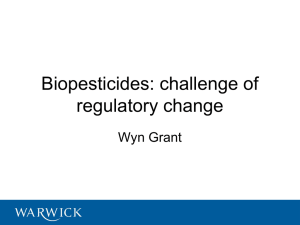1994 California Avocado Research Symposium pages 37-38
advertisement
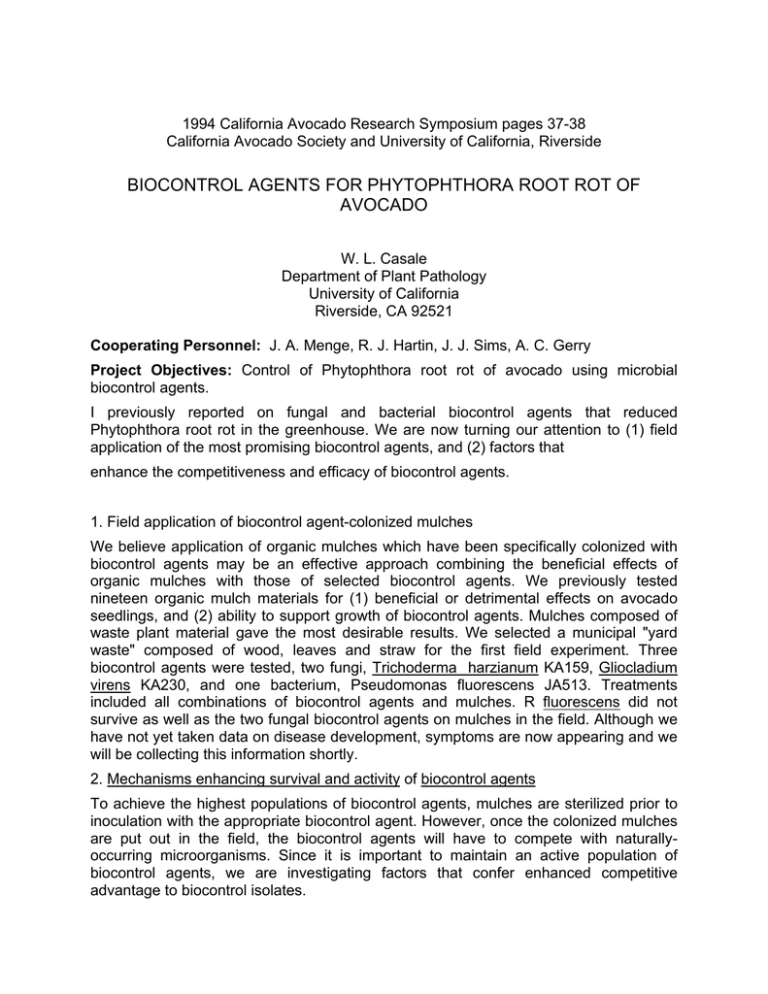
1994 California Avocado Research Symposium pages 37-38 California Avocado Society and University of California, Riverside BIOCONTROL AGENTS FOR PHYTOPHTHORA ROOT ROT OF AVOCADO W. L. Casale Department of Plant Pathology University of California Riverside, CA 92521 Cooperating Personnel: J. A. Menge, R. J. Hartin, J. J. Sims, A. C. Gerry Project Objectives: Control of Phytophthora root rot of avocado using microbial biocontrol agents. I previously reported on fungal and bacterial biocontrol agents that reduced Phytophthora root rot in the greenhouse. We are now turning our attention to (1) field application of the most promising biocontrol agents, and (2) factors that enhance the competitiveness and efficacy of biocontrol agents. 1. Field application of biocontrol agent-colonized mulches We believe application of organic mulches which have been specifically colonized with biocontrol agents may be an effective approach combining the beneficial effects of organic mulches with those of selected biocontrol agents. We previously tested nineteen organic mulch materials for (1) beneficial or detrimental effects on avocado seedlings, and (2) ability to support growth of biocontrol agents. Mulches composed of waste plant material gave the most desirable results. We selected a municipal "yard waste" composed of wood, leaves and straw for the first field experiment. Three biocontrol agents were tested, two fungi, Trichoderma harzianum KA159, Gliocladium virens KA230, and one bacterium, Pseudomonas fluorescens JA513. Treatments included all combinations of biocontrol agents and mulches. R fluorescens did not survive as well as the two fungal biocontrol agents on mulches in the field. Although we have not yet taken data on disease development, symptoms are now appearing and we will be collecting this information shortly. 2. Mechanisms enhancing survival and activity of biocontrol agents To achieve the highest populations of biocontrol agents, mulches are sterilized prior to inoculation with the appropriate biocontrol agent. However, once the colonized mulches are put out in the field, the biocontrol agents will have to compete with naturallyoccurring microorganisms. Since it is important to maintain an active population of biocontrol agents, we are investigating factors that confer enhanced competitive advantage to biocontrol isolates. Siderophores, iron-scavenging chemicals produced by microorganisms and plants under iron-limited conditions (especially at neutral or higher pH), have been implicated in microbial competition and biocontrol. Preliminary results using T. harzianum mutants deficient in siderophore production indicate that siderophores enhance the competitiveness of this fungus. 3. Tracking microorganisms in the field We have selected our biocontrol agents from among other isolates of the same species because they exhibited better biocontrol ability in the greenhouse. However, the species T. harzianum. G. virens and P. fluorescens are very common and indistinguishable from our biocontrol isolates by microscopic examination. Therefore, in order to track our biocontrol agents in the field, we require other methods to distinguish our biocontrol isolates from indigenous microorganisms of the same species. In addition to antibiotic resistance markers, we are using PCR technology and "DNA fingerprinting" to distinguish fungal isolates. It is possible that different Phytophthora cinnamomi isolates might respond differently to biocontrol. We used "DNA fingerprinting" to try to identify different isolates of R cinnamomi. Our attempts were unable to distinguish between any R cinnamomi isolates from avocado, although differences in the fingerprint patterns were observed between avocado isolates and R cinnamomi isolates from other plants. 4. Screening biocontrol agents in the greenhouse Greenhouse screening of a broad range of microorganisms for biocontrol ability is completed. However, we are focusing some greenhouse screening experiments on selected groups of microorganisms that have demonstrated biocontrol in an attempt to obtain more effective isolates.
